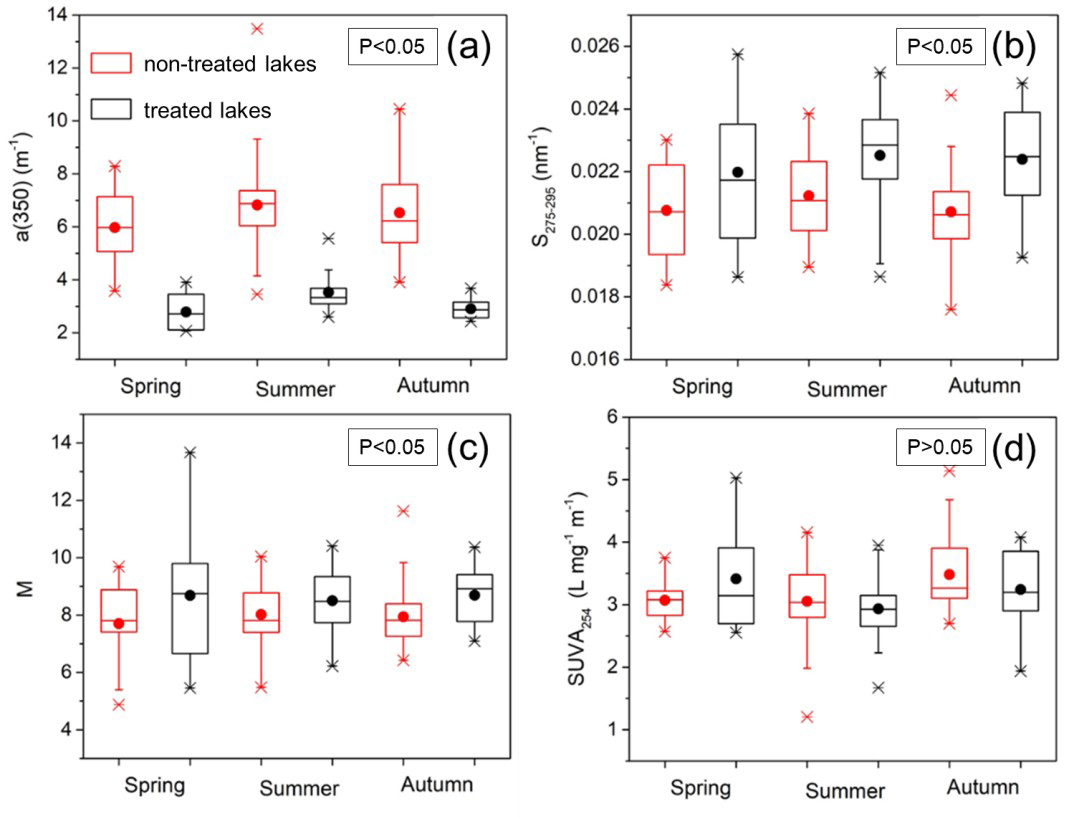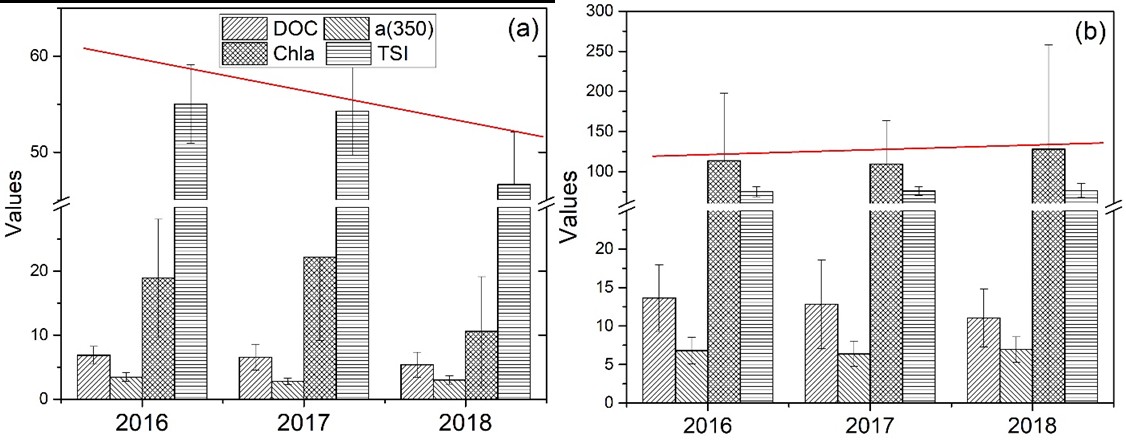Urban lakes and rivers are important components of urban ecosystems, and can provide waters for human consumption, recreational purposes, and industrial use. The intensification of human activities in urban settings can destabilize hydrologic flows, and leads habitat loss and irreversible alterations in aquatic species composition. Human activities can also lead to pollution and nutrient enrichment, the primary driver of eutrophication in urban lakes. The concentration and the optical characteristics of dissolved organic matter (DOM) in aquatic systems can provide important information about the ecological health of these systems and their sensitivity to anthropogenic and climatic forces.
Elevated concentration of DOM in aquatic systems is one of the most reliable indicators of pollution. In that regard, chromophoric dissolved organic matter (CDOM), the optically-active component of the DOM pool, can be used to assess pollution severity, trace the source of organic pollutants, and infer the response of aquatic systems to environmental stressors.
In this paper, two types of urban lakes can be found (i) lakes that are non-treated (NT) and impacted by recurrent discharges of pollutants and nutrients, and (ii) lakes that, through restoration measures and active management, are treated (T) from external inputs. For 3 years, we measured nutrients and CDOM properties in water samples collected from NT and T lakes in the city of Changchun, China. The NT lakes were eutrophic while the T lakes were mesotrophic, with mean trophic status index (TSI) of 74.2 and 50.3, respectively. The a(350), was 2-fold higher in NT than in T lakes (6.59 vs 3.21 m-1). In the NT lakes, CDOM components predominantly comprised large molecular weight (MW>1000-Da) humus-like substances of allochthonous origin, whereas in the T lakes CDOM was dominated by low MW (<1000-Da) substances from autochthonous production. The CDOM concentration were higher in summer than in other seasons. Weather conditions (rainfall, temperature) and biophysical processes (biodegradation, photo-bleaching) likely contributed to these variations. We found the water quality of the treated lakes was getting better from 2016 to 2018.

Fig. 1. Boxplot of optical properties of CDOM (chromophoric dissolved organic matter) in the non-treated lakes and treated lakes and for different seasons.

Fig. 2. Interannual variation analysis of CDOM and water quality in urban lakes for treated lakes (panel a) and non-treated lakes (panel b) during 2016-2018.
This work was also supported in part by the Natural Science Foundation of China (No. 41730104, 41701423), the Outstanding Yong Scientist Foundation of Institute of Northeast Geography and Agroecology (IGA), CAS, and the Academician workstation project of Chifeng university (cfxyys201702). This work has been published by Environmental Research 182 (2020) 109084.
Paper information: Lili Lyu, Zhidan Wen, Pierre-Andre Jacinthe, Yingxin Shang, Ning Zhang, Ge Liu; Chong Fang, Junbin Hou, Kaishan Song*. Absorption characteristics of CDOM in treated and non-treated urban lakes in Changchun, China. Environmental Research 182 (2020) 109084.
https://doi.org/10.1016/j.envres.2019.109084